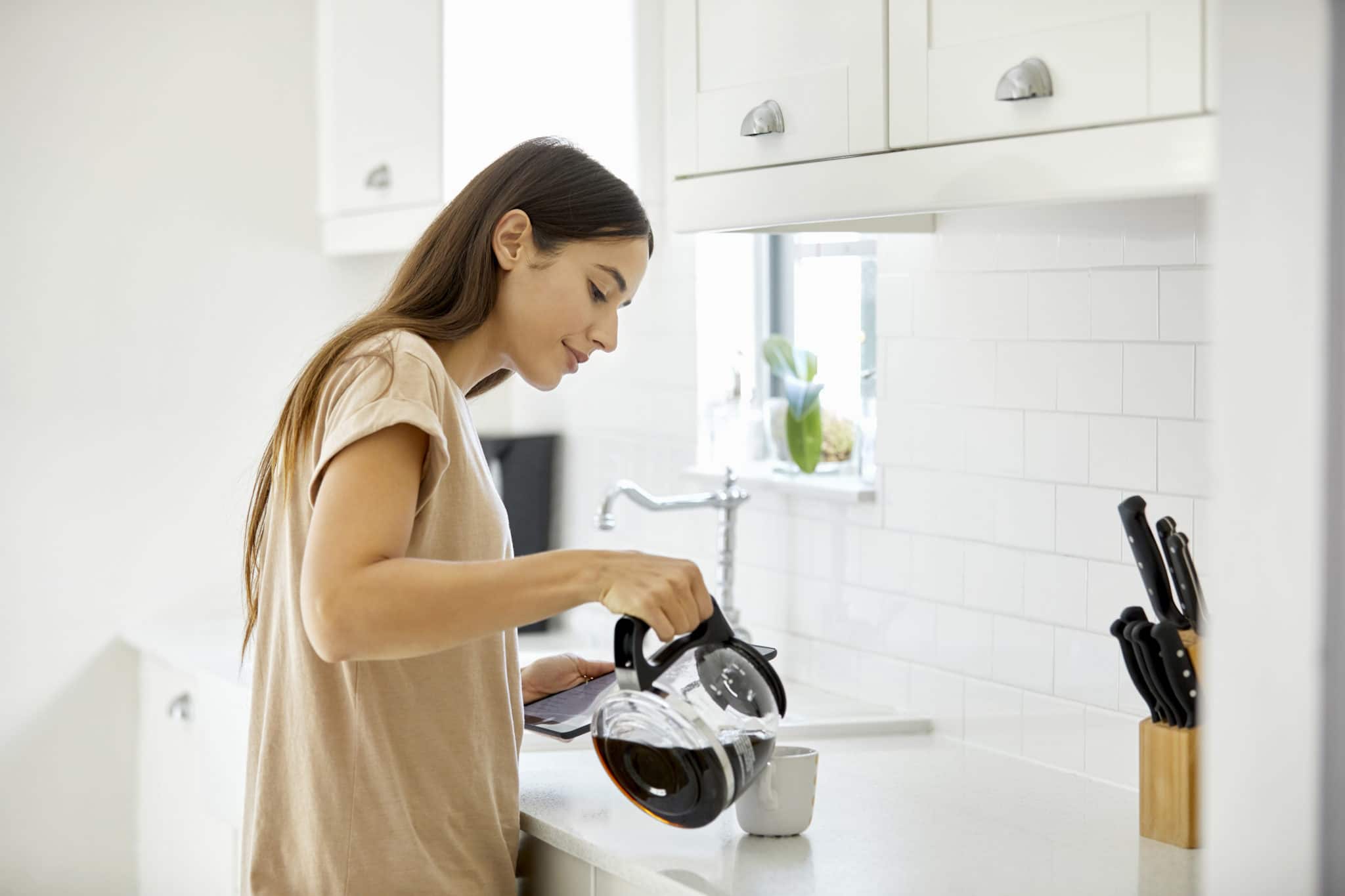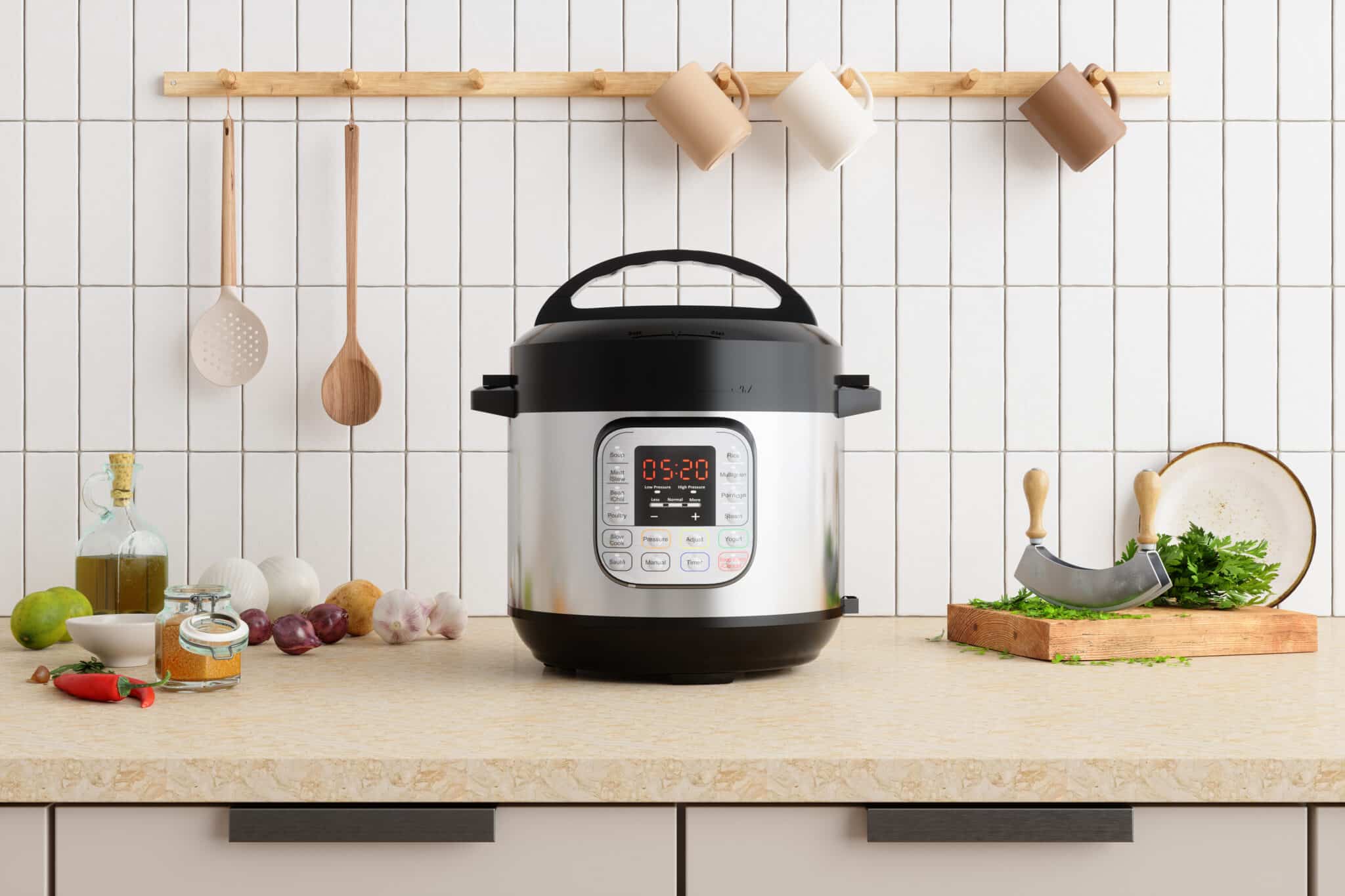If you notice that your morning brew doesn’t taste as good as it used to, it may be because your coffee maker needs a good clean. If you’re like many people, this may be the first time you’re tackling this task, and you may be wondering how exactly to clean a coffee maker.
The specifics on cleaning your coffee maker will vary depending on the kind of machine you have. For example, if you use a drip coffee pot, the process is different than if you use a Keurig. No matter what type you have, a clean coffee maker is key to a great cup of coffee.
According to the National Coffee Foundation, nearly 41% of Americans used a drip coffee maker in 2020. Since drip machines are so common, this guide will focus on cleaning a drip coffee maker. However, similar principles apply to other machines.
Why Clean Your Coffee Maker
Many people simply rinse their coffee pot when it’s empty. However, over time you may notice your coffee tastes a little more bitter or even burned. Just rinsing your coffee pot won’t get rid of mineral buildup, which can cause blockages too. All of this means your coffee maker won’t work as well as it used to—especially if you live in a region with hard water.
Beyond taste, a clean coffee pot is also better for your health. The National Sanitation Foundation International found coffee reservoirs were among the top ten kitchen locations where yeast and fungus accumulate. (Yeast, mold, and fungus are common allergens.) So, cleaning your coffee pot not only keeps your coffee tasting great, it also prevents the build up of fungus, mold, and mineral deposits.
What You Need to Clean a Coffee Maker
- Mild dish soap
- Plain distilled white vinegar
- A cleaning cloth
- Baking soda
Vinegar helps dissolve mineral deposits and also helps sanitize your coffee pot. However, please check your coffee maker’s instruction manual as vinegar may damage some machines.
How to Clean a Coffee Maker: Step by Step
1. Clean Your Carafe, Brew Basket & More
- First, empty your coffee pot and filter basket.
- If you haven’t already, unplug your machine.
- If your drip coffee maker has a hot plate, gently wipe it down using a clean cloth (or sponge) and baking soda diluted with water. Gently remove any spills or dust.
- If your coffee maker has a glass coffee carafe, you may clean it with warm, soapy water to remove accumulated coffee oils.
- Wash your plastic brew basket to remove coffee grounds and residual oil.
- Dry your carafe and brew basket.
2. Descale Your Coffee Maker
Over time, minerals like calcium and limestone build up in your coffee maker; removing this buildup is called descaling.
Since the mineral deposits come from your tap water, you may need to descale more often if you have mineral-rich hard water. Accumulated limestone may block the tiny holes and tubes in your coffee maker, resulting in an unpleasant flavor.
Descaling your coffee maker is easy, simply follow these steps:
- Plug in your coffee machine. Place a filter in your filter basket and position it as usual in your machine.
- Next, fill your pot’s reservoir using a 50-50 mixture of water and white distilled vinegar. If your local water is mineral-rich, consider using filtered water instead of tap water.
- Turn your coffee maker on and allow it to complete half the brew cycle using the vinegar-water mix. Halfway through, turn your pot off and allow it to soak for around 30 minutes (up to 60 if you have a lot of accumulated buildup in your machine).
- After the planned soaking time, turn your pot back on to complete the brew cycle. Empty the vinegar-water solution and throw away the filter.
3. The Finishing Touches
To cleanse your pot of the vinegar scent, do a second brew cycle just using plain water. Again, if you live in a hard water region, consider using filtered water.
For the final step, use a cleaning cloth to thoroughly wipe down the exposed areas.
Maintaining Your Clean Coffee Maker
Most coffee lovers recommend cleaning your coffee maker every three to six months depending on how frequently you make coffee.
If you live in a hard water region, you may need to descale your coffee maker more often. You can clean your machine any time you notice a bitter or unpleasant taste that isn’t the result of your coffee beans or brewing method.
Also, don’t forget to rinse your carafe and filter basket daily whenever you empty your coffee pot.
Variation For Pod Coffee Machines
A similar cleaning method applies to many single-serving pod coffee makers like Keurig or Nespresso. Simply ignore the instructions mentioning the filter basket or other parts that don’t apply.
Many single-serving pod coffee makers have a removable water reservoir and other parts. If your coffee machine has a removable water reservoir, you may remove it and clean it using soap and warm water. In fact, don’t forget to regularly clean and dry all the removable plastic parts including the drip tray and its cover, as well as the holder and funnel.
Wipe down the external parts of your coffee maker using a cleaning cloth. You can also use a toothbrush to clean the small external places such as around the dial.
After your removable parts are clean, reassemble your machine so you can run the vinegar and water mixture through your coffee maker.
Also, have a look and see if your coffee maker brand sells their own cleaning supplies. For example, Keurig sells its own coffee machine descaling solution.
Always be sure to read your machine’s manual to ensure that you don’t use products that may cause damage.
Clean Coffee Is Better for You
Learning how to clean your coffee maker will help you have great-tasting coffee every morning for months on end. The result is a healthier, heartier cup to start your day the right way.






